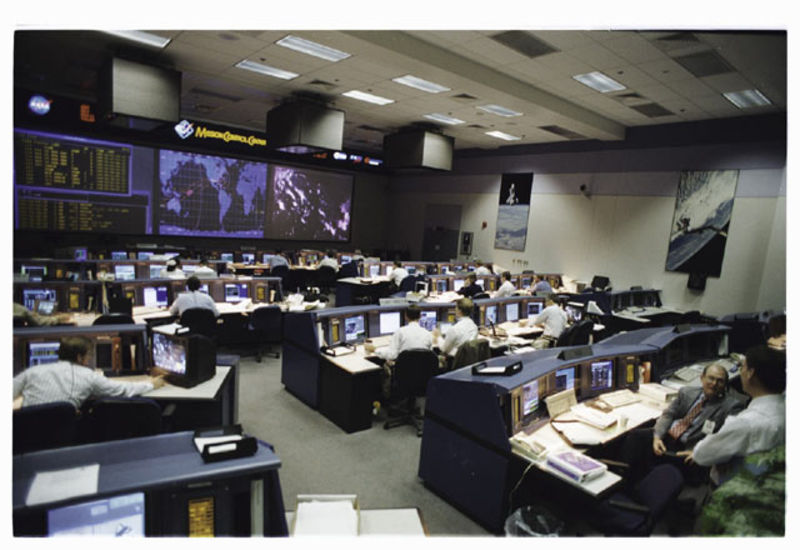
Terry Little
When I talk with project managers the question I get, perhaps more than any other, sounds like this: “I want to do things differently, but my boss is just not receptive. What can I do?” That question is always troubling to me because I have no ready answer.
Certainly people clinging to the status quo resent change and, oftentimes, the advocate of change too. This is so everywhere, but especially in Government, where an aversion to managerial risk abounds; plus, in Government, there is often a greater premium put on not failing than there is on truly doing something better.
So what do I say? One answer is, of course, to “go-with-the-flow.” Many project managers choose this course because it’s easier, less frustrating or less risky to them personally than being an advocate for change. For those whom the status quo is unacceptable, I have some thoughts that they might find useful.
Persistence pays off
Don’t give up right away if your boss rejects your brave new idea for change. Repackage it differently and have another go. One successful approach I have found is to add an “escape provision” to the proposal. Show your boss how, if your idea begins to go awry, that you can revert to the status quo without a major catastrophe or embarrassment.
Another approach that can work is to show your boss how championing your idea will personally benefit him. Most often this means illustrating how implementing it will make him look good to his bosses. Tie your idea to the coat tails of some speech, document or policy emanating from the agency’s senior leadership. Another suggestion is to shower your boss with detailed analysis about why your idea will produce a better outcome than clinging to the status quo. Such an analysis may be nothing more than quantitative speculation but can be persuasive. Unfortunately, many managers, especially those coming from scientific or engineering backgrounds, do not trust intuition or judgment as a basis for decision-making. Analysis works for them especially if there are numbers. Besides, if you have a lot of supporting analyses, your boss will know that you are earnest about your idea.
Finally, it really helps in selling your idea to a reluctant boss when you can drum up some allies or collaborators. These cannot be just anyone, but persons whom your boss is likely to find credible. Many bosses will resist any new idea coming from one person but will begin to embrace it when others also tout it as “good.” It’s called the “bandwagon effect,” and it often works to good effect.
I would be derelict here if I didn’t point out that being persistent in the face of bureaucratic obstacles implies being courageous. Challenges to the status quo threaten many people, their sense of self-worth, their belief that what they are doing is important, and, in some cases, their jobs. When bureaucrats feel threatened they fight rather than flee. The fight almost surely will be a relentless street fight wheread hominem attacks, whisper campaigns, and email wars are the norm. Commonly, those who feel threatened by change use the “chicken little” tactic, whereby they tout the worst imaginable outcome of a change as the most likely outcome. It takes true fortitude and passion for the agent of change to keep from withering in the face of fire. If you can’t muster the courage to stay until the bitter end, then don’t pick the fight!
Selectively challenging the status quo
In all our organizations there are doubtless many processes, practices and policies that need changing. My natural tendencies are to either go after them all in hopes of winning one or two, or to single out those that appear to offer the most promise for a dramatic improvement. Both approaches are probably doomed to fail. Challenging everything at once marks you as a “Don Quixote,” someone who tilts at every windmill and is simply a dreamer. In short, you appear to lack credibility and no one takes you seriously.
The second situation, identifying those changes that would seem to offer the most improvement, is sinister in its allure. The problem is that such changes are likely to be the hardest to implement. In some cases they may involve statutory changes that are near impossible to make happen at any reasonable time. Look for what’s doable — changes where the decision authority is clear cut — changes where it will be easy to secure influential allies — changes that can be implemented fairly quickly without having to get everyone and his brother to approve — changes that have some sort of precedent.
I’ve seen my own power to affect change grow over time. By succeeding at small changes, I have gained the credibility necessary to take a crack at larger changes. I admit it’s tough to be patient, but in the long run patience pays off.
Focus on execution
Any proposal for change can generate endless debate and consume enormous energy when deciding whether it is a good idea or not. As the advocate it’s tempting to believe that getting approval to do something different is the end of the battle. Not so! It’s only the beginning.
I have seen a lot of change proposals that seemingly were good ideas turn into disasters after the wheels came off during implementation. A few years ago I proposed to make past performance the most important factor in a big-dollar source selection of offerors. I knew it made eminent sense and resented that it was such a tough fight to get “the system” to agree. It was a major mindset change to have a factor other than cost or technical as most important. Nonetheless, after extensive dialog I won the battle, but as we got into actually doing the evaluation it quickly became apparent that I had vastly underestimated the complexity of doing what I proposed.
Truly, “the devil was in the details.” I had become so enchanted by the philosophical need for the change that I failed to come to grips with the pragmatic aspects of implementing it. What pulled us through were sheer doggedness and some luck.
Ultimately the test of whether a challenge to the status quo is a move forward or backward is not resolved by debate; results are what matter. And make no mistake, if you challenge the status quo it follows that you must be accountable for and own the results, good or bad. If you can’t do that, then keep quiet. Our system has more than enough critics willing to whine about the status quo but unwilling to accept accountability for the results.









